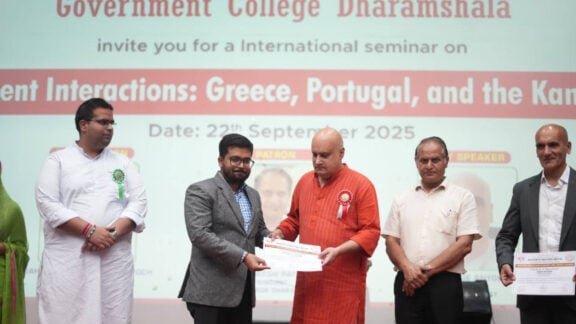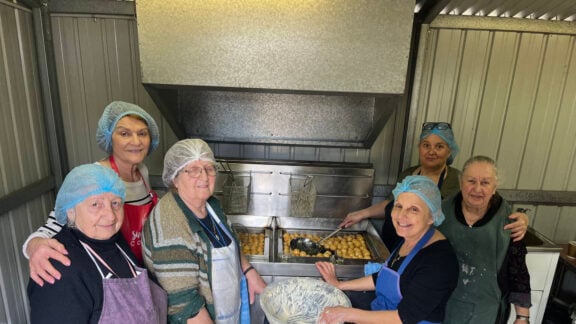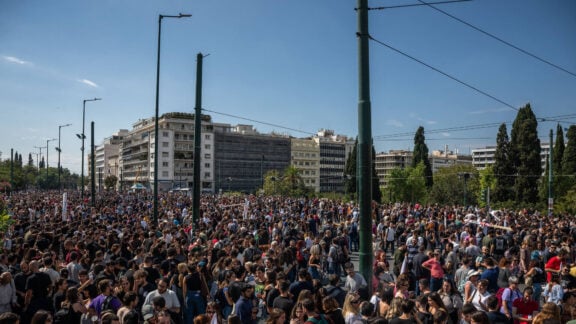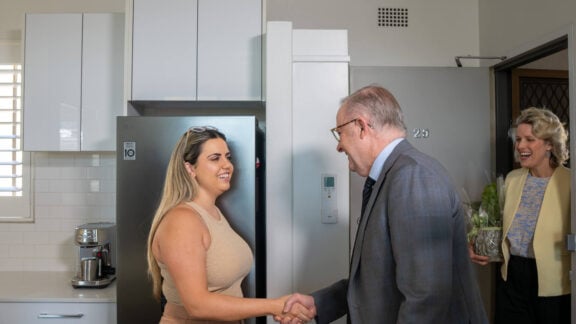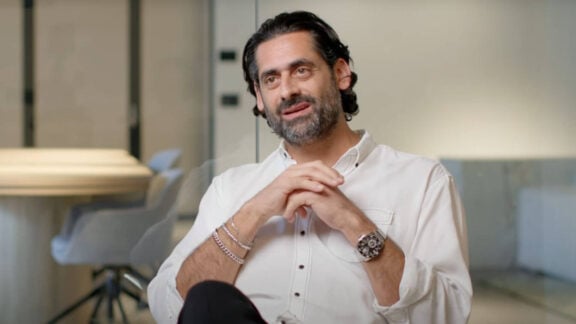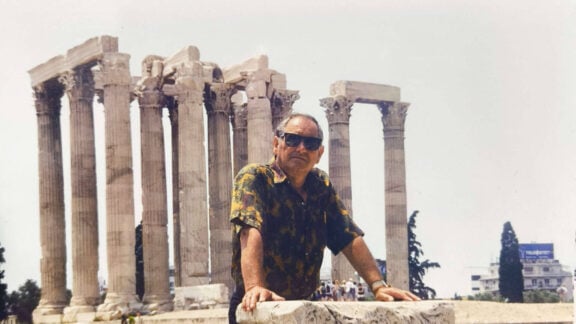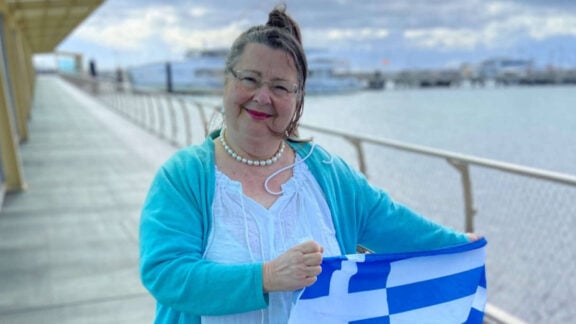Collaborators and life partners, Leonard Janiszewski and Effy Alexakis, will tell the story of the Greek Australian Diaspora since the early 1980s in a presentation titled, ‘In Their Own Image: Greek-Australians: A History of the Hellenic Presence in Australia, 1810s to Present’ on Wednesday, April 24.
Ultimately, we may never know who the first Greek to set foot on Australian soil. However, as in Homer’s ‘Odyssey’, memory and history, become in-part mythology, sewn together by 200 years of migration.
Janiszewski and Alexakis burrow deep to reveal a palimpsest of Greek Australian experiences – personal, gender, generational, cultural, political, and social.

Photo: John Oxley Library, SLQ, ‘In Their Own Image: Greek-Australians’, National Project Archives, Sydney
“We have had numerous exhibitions on the theme; we focused on women, on Greek gold miners, the history of Greek Milk Bars, the changing generations – it’s a huge subject.”
Their subject is a life’s, or their lives’, project.
“We want to help rewrite contemporary Australian historiography with a transnational pen based upon evidence of the interrelationships between all its people.
“We want to ensure that the diversity of voices should be heard and get heard, said Janiszewski to Neos Kosmos.

And on a personal and creative level, the life-long project “fulfils us and gives meaning to our life,” Alexakis had told Neos Kosmos in the past.
From the 1820s, among the convicts, England’s forced labour, and along with the opportunists, adventurers, and rogues were some Greeks.
“We want to help rewrite contemporary Australian historiography with a transnational pen based upon evidence of the interrelationships between all its people.” Leonard Janiszewski
Greeks, as always it seems, driven by war, crisis and fate, the Greek Revolution of 1821 made the revolutionaries, pirates to England not willing to offend the Porte. So, a handful landed as convicts in Australia.
Then, in the 1850s came the first wave of Greek migrants, who like the Chinese, the Italians, and others, were all looking for illusive gold.

The Gold Rush swept away the ‘tyranny of distance’. For a culture born of diaspora, economic opportunities beckoned. The first collective Greek settlements arose, and ‘chain migration’ was stimulated.
By the 1890s, there were Greek communities in Melbourne and Sydney, and by the start of World War II, 15,000 Greeks lived in Australia. Shut out of mainstream society by racism and anti-foreigner sentiments. These Greeks – mainly from Asia Minor, certain islands, and the Middle East – sought safety and livelihood through small businesses. They maintained their Hellenism through new media, church, and community structures.
Following World War II – when Greece suffered the Nazi occupation and then fratricide in the Greek Civil War – mass migration began. Between 1953 and 1956, almost 30,000 Greeks arrived in Australia – well over half were assisted migrants placed in ‘migrant camps’.

‘Bride ships’ brought over large numbers of single Greek women. Between 1947 and the early 1980s, some 250,000 Greeks arrived in Australia. This included those Greek Cypriots fleeing the 1974 invasion by Turkey.
Recently, during the Greek economic crisis 2008, Australia became a nation of migration again. Of course, this time, it wasn’t the impoverished from the rural areas or traders and shopkeepers from the towns and cities. The 21st Century wave of Greek migrants were middle-class, educated and multi-lingual.
The presentation will focus on characters such as Bill Florence (Vasilios Florias) in Melbourne, 1922. Florias was born on the Greek island of Ithaca and landed in Melbourne in 1922 as a teenager. He was a link in the chain migration of his family to Australia – his father two brothers and sister having journeyed out earlier.
Then there is the intriguing Jeremiah Williams (Gerasimos Vasilakis) and his fellow miners at a mine head in Tambaroora, NSW, from the early 1870s and all the way to contemporary Hellene and actor, Mary Coustas, born in Collingwood, Melbourne, in 1964. Coustas, has received an Australian Film Industry Nomination for Best Supporting Actress in 1988 for her performance in Mull, but it is for her Greek-Australian character, ‘Effie’, that she is best known.

Australia’s contemporary Greek community, including those of Greek descent, ranges in estimates from 500,000 to 700,000.
“The intangible notion of Hellenism connects us, and while we may not know each other well, we know each other as Hellenes and Greek Diaspora,” Alexakis said. https://neoskosmos.com/en/2022/03/25/features/greek-australian-experience-as-a-forty-year-photo-chronicle-by-effy-alexakis/
Janiszewski and Alexakis create artefacts. People, history, events, fixed in time –alive in that moment in photography and text – the journal of our lives as Greek Australians.
Janiszewski and Alexakis also underscore how our community is as diverse, or non-homogenous, as is multicultural Australia.
In Their Own Image: Greek-Australians: A History of the Hellenic Presence in Australia, 1810s to Present’
When: Wednesday, April 24 at 2-3.30pm
Where: 860 Ferntree Gully Road, Wheelers Hill

